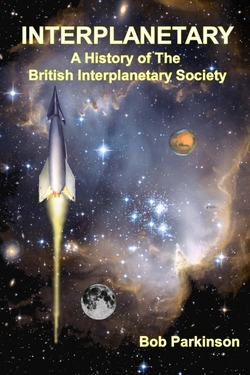Centauri Dreams
Imagining and Planning Interstellar Exploration
Hayabusa2 Team Looks Toward Sample Collection
With two rovers and a lander already deployed on the asteroid 162173 Ryugu, the Japan Aerospace Exploration Agency (JAXA) must be basking in the glow of an unusually successful venture. Now we turn to a key part of the Hayabusa2 mission, the retrieval of a surface sample. Two touchdown rehearsals have gone well, providing detailed views of the asteroid’s surface. The plan is to return samples to Earth in December of 2020, but let’s continue to take one thing at a time. Sample retrieval can be dicey, as we saw with the first Hayabusa.
Once known as MUSES-C, the original Hayabusa reached asteroid Itokawa in September of 2005 (I can’t believe it was that long ago — as the cliché would have it, it seems like yesterday). A series of enroute problems included a solar flare that damaged the craft’s solar cells and the failure of attitude-adjusting reaction wheels, while the launch of a probe called MINERVA also failed. Nonetheless, surface particles from Itokawa were successfully returned to Earth.
Now the Hayabusa2 team works on landing site selection, no easy task. Keeping the spacecraft safe means looking for regions ideally 100 meters in diameter in which there is an average slope of less than 30 degrees, boulder heights less than 50 centimeters, and an absolute temperature less than 370 Kelvin (97 degrees Celsius). These constraints limit the site to 30 degrees either side of the asteroid’s equator, all this on a diminutive object that presents its own problems.
“Unlike other asteroids we have visited, Ryugu has no powder, no fine-grain regolith. That makes selecting a place to sample more challenging,” said the Planetary Science Institute’s Deborah Domingue. “We are helping characterize the surface to optimize landing site selection.”

Image: This image of asteroid Ryugu was taken with Hayabusa2’s ONC-T (Optical Navigation Camera-Telescopic) on October 15, 2018 from an altitude of 42 meters. The resolution is about 4.6 millimeters per pixel, and this is the highest resolution that Hayabusa2 spacecraft has taken. In fact, this is the highest resolution image that a spacecraft has taken of an asteroid. Credit: JAXA, Tokyo University, Kochi University, Rikkyo University, Nagoya University, Chiba Institute of Technology, Meiji Univeristy, Aizu University, and AIST.
Along with PSI’s Lucille Le Corre, a co-investigator on the mission’s Optical Navigation Camera (ONC) team, Domingue discussed these and other Hayabusa2 operations at a press conference at the 50th annual meeting of the American Astronomical Society’s Division for Planetary Sciences (DPS) in Knoxville. Hayabusa2 team members present included Masaki Fujimoto, the head of ISAS/JAXA, Hikaru Yabuta, lead of the landing site selection committee and the multi-scale regolith characterization team, Ralf Jaumann, lead for the European Space Agency’s (ESA’s) MASCOT lander, and Eri Tatsumi, the ONC team instrument scientist.
“Since the approach phase began last June, my main goal was to support the Hayabusa2 team in the preparation of touch down operations,” said Le Corre. “In order to assess the sampleability of Ryugu’s terrains I have worked on generating products such as ONC image mosaics and local topographic models. Our data show that the Hayabusa2 team has to carefully select a sampling site to avoid the numerous boulders present on the surface.”
Lacking fine-grained regolith, Ryugu is challenging, and the mission demands a thorough analysis of the surface to ensure a successful sample collection. Three sample collections are planned, the first now likely no sooner than January of 2019. The first two sample collections will use a sampler horn that will catch particles of ejecta raised by the firing of a projectile into the surface. The third sample collection, in the late spring, will collect material dislodged by a kinetic impactor that will produce a crater on the surface of Ryugu.
The image below (taken by a camera that, incidentally, was funded by public contributions) comes from the Hayabusa2 website and shows the sampler horn.

Image: Test photograph of the sampler horn taken by the Small Monitor Camera (CAM-H) on April 16, 2018. The shiny part in the red circle is the target plate of the sampler horn which is illuminated by the LRF-S2 laser. If the laser misses this plate, touchdown is in process and bullets will fire to stir up surface material. Credit: JAXA.
The LRF-S2 laser referred to in the caption is a part of planned sample collection activities. In the image, the LRF-S2 laser beam is hitting the tip of the sampler horn, indicating the craft is ready for touchdown operations. During touchdown, the sampler horn will compress as it touches the surface. JAXA describes the operation this way:
When the distance measurement from LRF-S2 changes or the laser from LRF-S2 deviates from its target at the base of the sampler horn, bullets will be fired to stir up the surface material for collection. This makes the LRF-S2 an important device for successful sample collection.
To keep up with Hayabusa2 operations, keep an eye on Twitter @haya2e_jaxa, from which I drew the tweet below.
Dropping down…! Sequential images taken during the approach to Ryugu in our second touchdown rehearsal, TD1-R1-A. https://t.co/sZ9Z8jb6tk pic.twitter.com/wzcG7XcaEX
— HAYABUSA2@JAXA (@haya2e_jaxa) October 26, 2018
And here is the image with possible touchdown area LO8-B, considered the most promising candidate.
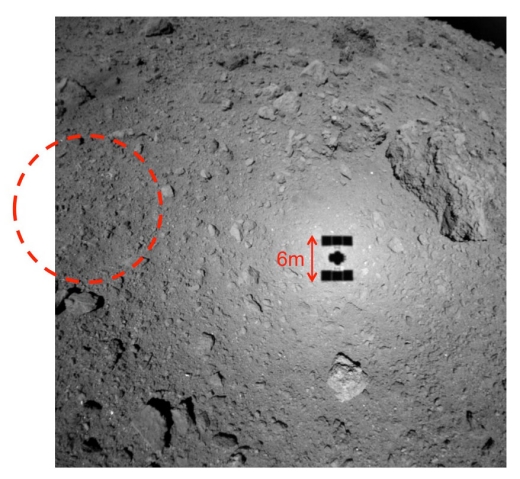
Image: The surface of Ryugu captured with the ONC-W1 at an altitude of about 47m. The image was taken on October 15, 2018 at 22:45 JST. The red circle indicates the candidate point for touchdown, L08-B. Credit: JAXA, University of Tokyo, Kochi University, Rikkyo University, Nagoya University, Chiba Institute of Technology, Meiji University, University of Aizu, AIST).

Game-Changer: A Pluto Orbiter and Beyond
To say that the Space Science and Engineering Division at Southwest Research Institute has been busy of late is quite an understatement. Alan Stern, principal investigator for New Horizons, has been leading an SwRI study examining just how we might operate an orbiter at Pluto/Charon, with results that are surprising and encouraging for the future of such a project.
Working with spaceflight engineer and mission designer Mark Tapley and planetary scientist Amanda Zangari, as well as project manager John Scherrer and software lead Tiffany Finley, Stern has been looking at an orbital tour of Pluto built around a series of gravity assist maneuvers involving Charon, its large moon. The mission would use the kind of electric propulsion system we saw in the Dawn mission to Vesta and Ceres, and by clever use of gravity assists, would pull off another Dawn feat by leaving Pluto once its orbital operations were concluded and moving into the Kuiper Belt for encounters with further objects.
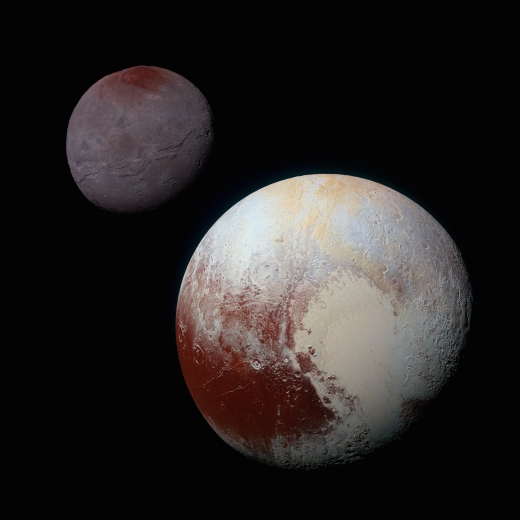
Image: NASA’s New Horizons mission made the first exploration of Pluto-Charon and its system of small moons in 2015. The scientific discoveries led the science community to push for a return to Pluto with an orbiter or to explore other dwarf planets in the Kuiper Belt. Credit: NASA/JHUAPL/SwRI.
The news comes out of a workshop on Pluto and Kuiper Belt exploration held at the American Astronomical Society’s Division for Planetary Sciences meeting in Knoxville, Tennessee. Gravity assists from Charon save propellant, making it possible to continually change the orbiter’s track over Pluto while studying its surface and atmosphere, as well as its system of moons. Several years in such an adjustable orbit would allow us to home in on major discoveries from New Horizons while also uncovering numerous other features that spacecraft did not see.
But it’s also the move into the Kuiper Belt that has Stern’s attention. It makes a Pluto orbiter of this design a multi-purpose spacecraft and leverages our growing experience with ion propulsion. Says Stern:
“This is groundbreaking. Previously, NASA and the planetary science community thought the next step in Kuiper Belt exploration would be to choose between ‘going deep’ in the study of Pluto and its moons or ‘going broad’ by examining smaller Kuiper Belt objects and another dwarf planet for comparison to Pluto. The planetary science community debated which was the right next step. Our studies show you can do both in a single mission: it’s a game changer.”
As analyzed by Tiffany Finley, the orbital tour, still being optimized, would allow dozens of gravity assists at Charon, offering a series of flybys of Pluto’s smaller moons as well as close encounters with Charon itself. Finley talks about studying Pluto’s polar and equatorial regions using plane changes enabled by these maneuvers, including sampling the dwarf planet’s atmosphere. A final Charon gravity assist would take the orbiter into the Kuiper Belt.
And Mark Tapley’s work on electric propulsion ups the ante. He’s arguing that not only would this craft be able to perform flybys of Kuiper Belt objects, but that it could even enter orbit around a second dwarf planet in the Kuiper Belt, just as Ceres followed Vesta for Dawn.
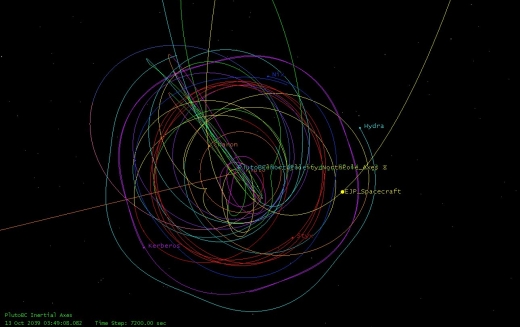
Image: The SwRI-developed Pluto orbital tour design shows scientific objectives can be met with only tiny fuel resources and numerous gravity assists using Pluto’s giant moon Charon. Credit: Southwest Research Institute.
What sort of missions are we talking about? Amanda Zangari’s separate study for this group has looked at the 45 largest Kuiper Belt objects and dwarf planets (covering “the most desirable and scientifically interesting targets”) with launches possible between 2025 and 2040. How these trajectories might be accomplished is presented in a paper that has been accepted by the Journal of Spacecraft and Rockets. From the paper, this is a bit of an eye-opener:
There is a KBO mission possible for every Earth-Jupiter launch window throughout a Jupiter revolution, thus Pluto and every one of the selected 45 KBOs are accessible via Jupiter gravity assist with a flight time of under 25 years and a C3 [excess launch energy] less than 140 km2/s2. Many, but not all objects can be reached via Saturn flyby, and a smaller list still can be compatible with a visit to an ice giant, though it does not necessarily provide a TOF [time of flight] advantage.
Which leads to this:
We found that all five of the non-Pluto KBOs studied by McGranaghan et al [23] can be reached by giant planet swingby— (136199) Eris and (90377) Sedna with Neptune, and (50000) Quaoar, (136472) Makemake and (136108) Haumea via Jupiter-Saturn. Fast-rotator (20000) Varuna is reachable after a Uranus encounter.
Working out the best targets will be critical, for as the paper goes on to note:
We have not considered multiple KBO flybys. It is worth noting that the prospect of an additional flyby of a KBO after Pluto played a large role in New Horizons’ selection, and that it was possible because of Pluto’s proximity at the time to the plane of the Solar System. Many of our KBOs have highly inclined orbits and are often far outside the plane of the Solar System at the time of flyby, thus no additional flybys will be possible en route owing to the vast separations between objects. To probe a second KBO typically requires one to fly through the classical belt.
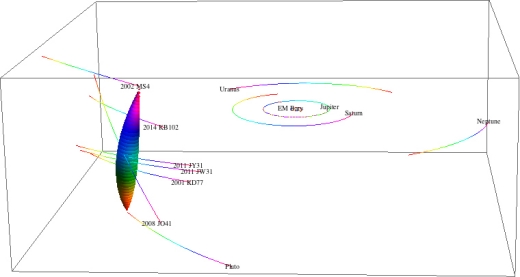
Image: This figure depicts an electric propulsion spacecraft leaving Pluto orbit, flying by other small Kuiper Belt objects and then reaching the dwarf planet 2002 MS4 as just one example of the “gold standard” Pluto orbiter-Kuiper Belt explorer mission discovered by the SwRI study team. Credit: Southwest Research Institute.
We’ll need a good name for the Pluto orbiter/Kuiper Belt explorer mission, so start thinking about it now as we begin hoping that such a mission will be funded. Back to Stern for the conclusion:
“Who would have thought that a single mission using already available electric propulsion engines could do all this? Now that our team has shown that the planetary science community doesn’t have to choose between a Pluto orbiter or flybys of other bodies in the Kuiper Belt, but can have both, I call this combined mission the ‘gold standard’ for future Pluto and Kuiper Belt exploration.”
The team’s paper on spacecraft trajectories at Pluto/Charon and beyond is Zangari et al., “Return to the Kuiper Belt: launch opportunities from 2025 to 2040,” accepted at the Journal of Spacecraft & Rockets (preprint).

A Thermal Map of Europa (& an Intriguing Anomaly)
Europa stays in this news this morning as we continue to correlate recent observations with the invaluable results of the Galileo mission. Hubble data have played a role in this, with researchers identifying plume activity in 2013 that recalled the geysers of Enceladus, a possible indication of venting from the subsurface ocean. But analysis of Cassini data from its 2001 Jupiter flyby enroute to Saturn showed no evidence of plume activity through its ultraviolet imaging spectrograph (UVIS).
So what exactly did Hubble see? Yesterday’s post highlighted Julie Rathbun’s contention that if they are there, Europan plumes show no thermal signature in Galileo data, while Xianzhe Jia (University of Michigan) and the SETI Institute’s Melissa McGrath have used Galileo magnetometer data to support possible plume activity. We may need Europa Clipper to resolve the matter.
Now the 66 dish antennas of the Atacama Large Millimeter/submillimeter Array (ALMA) have been turned on Europa in an attempt to study the entire moon — not just the areas of possible plume activity — to develop a thermal model. The data allow us to find what the authors of the paper on this work describe as “significant thermal structure.” What we get out of this is the ability to construct a global map showing the varying heat signatures across this remote world, in the process revealing an unusual cold spot on Europa’s northern hemisphere.
“These ALMA images are really interesting because they provide the first global map of Europa’s thermal emission,” said Samantha Trumbo, a planetary scientist at the California Institute of Technology and lead author on a paper published in the Astronomical Journal. “Since Europa is an ocean world with potential geologic activity, its surface temperatures are of great interest because they may constrain the locations and extents of any such activity.”
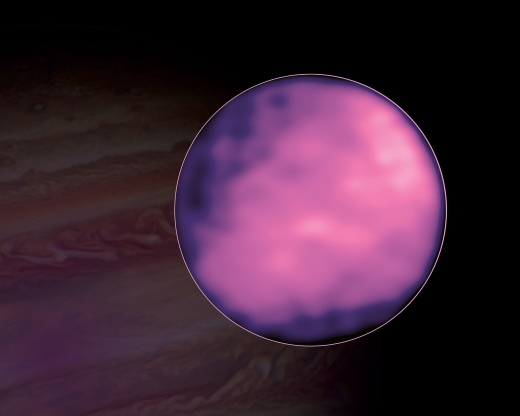
Image: ALMA image of Jupiter’s moon Europa. ALMA was able to map out thermal variations on its surface. Hubble image of Jupiter in the background. Credit: ALMA (ESO/NAOJ/NRAO), S. Trumbo et al.; NRAO/AUI NSF, S. Dagnello; NASA/Hubble.
ALMA’s ability to detect Europa’s thermal ‘glow’ is remarkable given that its surface temperature is never warmer than about minus 160 degrees Celsius, but this is an instrument that can provide insights into not just Jovian moons but asteroids and comets as well. On Europa, ALMA’s images have a resolution of 200 kilometers. Learning more about Europa’s surface can give us insights into its geological processes, especially interesting given that this surface is comparatively young, an indication of thermal or geological activity that has yet to be identified.

Image: Series of 4 images of the surface of Europa taken with ALMA, enabling astronomers to create the first global thermal map of Jupiter’s icy moon. Credit: ALMA (ESO/NAOJ/NRAO), S. Trumbo et al.
Trumbo and colleagues developed their global thermal model of Europa based on the ALMA observations, folding in an albedo map constructed from Voyager measurements and factoring in Galileo data. As for that odd cold spot on Europa’s northern hemisphere, it stands out on the ALMA maps near 90 degrees West and 23 degrees North. It also appears in two different images at two different times of day, an indication that it is genuinely distinct in its thermal properties. Moreover, Galileo may not be able to help us here, as the paper explains:
This region coincides with the location of highest water ice abundance mapped by Brown & Hand (2013) and the location suggested to have the most crystalline water ice by Ligier et al. (2016). However, it does not correspond to any particular geologic unit (Leonard et al. 2017) or any unusual visible morphological or albedo features (USGS 2002). The anomaly is located within a region of relatively low-resolution imaging and was not covered by the published Galileo PPR [Photopolarimeter-Radiometer] data, so it is possible that a corresponding morphological, geologic, or thermal feature was simply not seen by Galileo.
What to make of it? Except for discrepancies like this one, the model the authors work with reproduces the thermal structure seen by ALMA, an indication that we are seeing the results of albedo variation across the surface and the absorption and re-emission of sunlight. However, they find little correlation between the heat signatures and surface geology except for the area around Pwyll crater (this is similar to crater ejecta data elsewhere in the Solar System, which also show a distinctive signature). The cold spot referenced above remains enigmatic and will await future ALMA observations.
An afterword on Pwyll crater, which has been associated with possible plume activity: The ALMA map shows that Pwyll has a “locally elevated thermal inertia.” What this means is that this area takes longer to reach equilibrium with local temperature change than areas around it. Various factors are at play here, including density and thermal conductivity. Of particular interest is that the ‘cold spot’ anomaly is almost directly on the other side of Europa from Pwyll.
There is an analogy here with our own Moon, and the association with geological features on it that are directly opposite, or antipodal, to Tycho crater. But that is about as far as we can go with existing data. “Unfortunately,” the authors write, “without new, high-resolution imaging, the potential association of this feature with unique geology will likely remain an open question.”
The paper is Trumbo et al., “ALMA Thermal Observations of Europa,” Astronomical Journal Vol. 156, No. 4 (18 September 2018). Abstract / Preprint.

No Heat Signature of Europan ‘Plumes’
One of the youngest surface features on Europa draws attention because of its possible connection with what lies beneath the Jovian moon’s ice. The dark center of Pwyll crater, visible in the image below, is some 40 kilometers across, with a central peak reaching about 600 meters. At issue is the terrain resulting from the impact causing the crater. An impact perhaps 20 million years ago seems to have blown water and ice across the Europan surface. Evidence of a possible plume from Europa’s ocean in this area is the subject of continuing work.
The bright terrain around the crater suggests water ice, and note, too that the Pwyll impact left ejecta rays as far as the Conamara Chaos region 1000 kilometers to its north. Conamara Chaos features themselves have been studied extensively for terrain suggestive of melting and refreezing ice. We saw recently how Xianzhe Jia (University of Michigan), working with the SETI Institute’s Melissa McGrath, used data from the Galileo mission to support later Hubble evidence of possible plumes on Europa (see Galileo Evidence for Plumes on Europa).
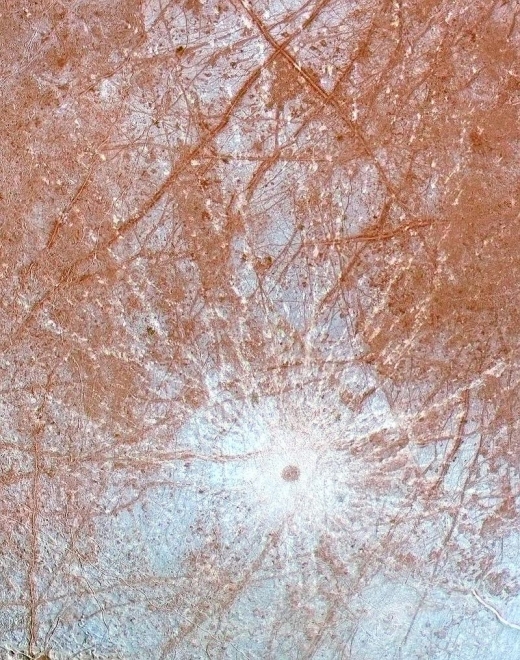
Image: This enhanced color image of the region surrounding the young impact crater Pwyll on Jupiter’s moon Europa was produced by combining low resolution color data with a higher resolution mosaic of images obtained on December 19, 1996 by the Solid State Imaging (CCD) system aboard NASA’s Galileo spacecraft. This region is on the trailing hemisphere of the satellite, centered at 11 degrees South and 276 degrees West, and is about 1240 kilometers across. North is toward the top of the image, and the sun illuminates the surface from the east. The 26 kilometer diameter impact crater Pwyll, just below the center of the image, is thought to be one of the youngest features on the surface of Europa. The diameter of the central dark spot, ejecta blasted from beneath Europa’s surface, is approximately 40 kilometers, and bright white rays extend for over a thousand kilometers in all directions from the impact site. Credit: NASA/JPL-Caltech.
Plumes on Europa would be a momentous discovery, one reason the elusive evidence for their existence is proving so controversial. For if we had active plumes venting seawater from the deep Europan ocean, we could study their composition without the need for landing and drilling through the ice. Europa, like Enceladus, could prove a target for astrobiologically-focused missions in the near future, and indeed, the two researchers I cited above are both associated with the Europa Clipper science team, which will perform multiple flybys of the moon.
This morning we learn that Julie Rathbun (Planetary Science Institute) has dug into the evidence for Europan plumes in a talk titled “A closer look at Galileo Thermal data from possible plume sources near Pwyll, Europa,” with news that makes these plumes more unlikely. For what we would expect at Europa is similar to what we see at Enceladus, the signature of hotspots that flag the energy source driving the plume activity. Similar hotspots can be found on Earth at geysers like Yellowstone and its associated hot springs. But no Europan hotspots can be found.
Rathbun states the issue concisely, so let me just quote her on this:
“We searched through the available Galileo thermal data at the locations proposed as the sites of potential plumes. Reanalysis of temperature data from the Galileo mission does not show anything special in the locations where plumes have possibly been observed. There are no hotspot signatures at either of the sites.”
Such plumes may exist, but appear only rarely. Rathbun continues:
“This is surprising because the Enceladus plumes have a clear thermal signature at their site of origin, so this suggests that either the Europa plumes are very different, or the plumes are only occasional, or that they don’t exist, or that their thermal signature is too small to have been detected by current data.”
Rathbun presented these findings at a Division for Planetary Sciences press conference held at the American Astronomical Society 50th annual meeting in Knoxville, TN. Plume research is ongoing, and bear in mind that the possible plume in the area near Pwyll is not the only one being considered. There is evidence in the Xianzhe Jia and Melissa McGrath work for plume activity about 1,000 kilometers northeast of the first site. Indeed, Jia and McGrath found that magnetic perturbations found by Galileo during its E12 flyby were consistent with a rising plume.
So the jury is still out. If we can get Europa Clipper off, perhaps as early as 2022, its flybys could prove conclusive one way or another. While we wait, analysis and simulations of the interactions between possible plumes and the plasma environment around Europa continue. We have only two Galileo flybys of the Moon containing magnetometer data that came closer than 400 kilometers from the surface, where we might expect a plasma and magnetic field signature if plumes exist, but Europa Clipper will ramp up the magnetic and thermal dataflow considerably.
The Xianzhe Jia paper is “Evidence of a plume on Europa from Galileo magnetic and plasma wave signatures,” published online at Nature Astronomy 14 May 2018 (abstract).

Birth of a Supercluster
Long-time Centauri Dreams readers know that I love things that challenge our sense of scale, the kind of comparison that, for example, tells us that if we traveled the distance from the Earth to the Sun, we would have to repeat that distance 268,770 times just to reach the nearest star. It’s much simpler, of course, to say that Proxima Centauri is 4.25 light years from us, but it’s the relating of distances to things that are closer to us that gets across scale, especially for those who are just beginning their astronomical explorations. And I have to admit that the scales involved in going interstellar still pull me up short at times when I ponder them.
So how about this for scale: We have somewhere between 200 billion and 300 billion stars in our galaxy (the number is flexible enough that you’ll see a wide range in the literature). Relate that to the Local Group, the gathering of galaxies that includes both the Milky Way and M31, the Andromeda Galaxy. These are the two most massive members of the Local Group, but depending on how we count dwarf galaxies, it contains more than 30 members spread out over a diameter of 10 million light years. Both the Milky Way and M31 have their own dwarf galaxies.
Then consider the concept of a ‘supercluster,’ which contains galaxy groups within it. Thus the Milky Way is considered part of both the Local Group as well as the Laniakea Supercluster, which is itself home to approximately 100,000 galaxies and subsumes the Virgo Supercluster. The Laniakea Supercluster emerged in the literature in 2014 in a paper examining the relative velocity of galaxies. Laniakea is a Hawaiian word meaning ‘immense heaven.’ R. Brent Tully (University of Hawaii at Manoa) and team identified this structure some 520 million light years in diameter, containing 100,000 galaxies, with a mass of one hundred million billion Suns.
Now a team of astronomers working with data from the European Southern Observatory’s Very Large Telescope (VLT) using its VIMOS (VIsible Multi-Object Spectrograph) instrument has identified a proto-supercluster that formed in the early universe 2.3 billion years after the Big Bang (i.e., its redshift of 2.45 means that astronomers observe it as it was 2.3 billion years after the Big Bang). ESO is describing the discovery, which they have nicknamed Hyperion, as the most massive structure yet found so early in the formation of the Universe.
“This is the first time that such a large structure has been identified at such a high redshift, just over 2 billion years after the Big Bang,” explained the first author of the discovery paper, Olga Cucciati. “Normally these kinds of structures are known at lower redshifts, which means when the Universe has had much more time to evolve and construct such huge things. It was a surprise to see something this evolved when the Universe was relatively young!”
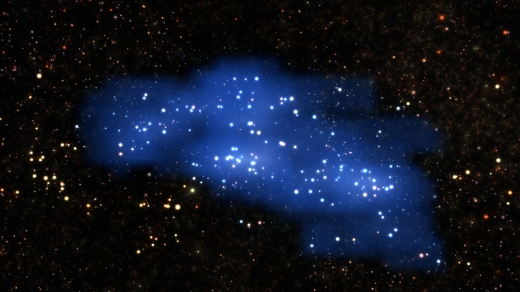
Image: An international team of astronomers using the VIMOS instrument of ESO’s Very Large Telescope have uncovered a titanic structure in the early Universe. This galaxy proto-supercluster — which they nickname Hyperion — was unveiled by new measurements and a complex examination of archive data. This is the largest and most massive structure yet found at such a remote time and distance — merely 2 billion years after the Big Bang. Credit: ESO/Luis Calçada and Olga Cucciati.
Hyperion emerged in the analysis of a field in the constellation Sextans carried out by researchers in the VIMOS Ultra-deep Survey, which has been creating a 3D map of the distribution of over 10,000 galaxies. Hyperion contains seven high-density regions connected by thin ‘filaments’ of galaxies. The average supercluster, says Brian Lemaux (University of California, Davis), an astronomer and co-leader of the team behind this result, shows more concentrated distribution of mass and clear structure. “But in Hyperion,” Lemaux adds, “the mass is distributed much more uniformly in a series of connected blobs, populated by loose associations of galaxies.”
The mass distribution makes sense when you consider that nearby superclusters have had billions of years to create the observed clumping into denser regions with more defined structure. We might expect Hyperion to evolve into something more like the Virgo Supercluster, and studying it should provide insights into how galactic superclusters evolve. It offers a rare glimpse into the early era of supercluster formation, and another signpost of immensity.
What’s ahead for the study of Hyperion? Calling it a “unique possibility to study a rich supercluster in formation 11 billion years ago,” the paper adds this:
This impressive structure deserves a more detailed analysis. On the one hand, it would be interesting to compare its mass and volume with similar findings in simulations, because the relative abundance of superclusters could be used to probe deviations from the predictions of the standard ?CDM model [Lambda cold dark matter, a model that includes a cosmological constant, dark energy and cold dark matter]. On the other hand, it is crucial to obtain a more complete census of the galaxies residing in the proto-supercluster and its surroundings. With this new data, it would be possible to study the co-evolution of galaxies and the environment in which they reside, at an epoch (z ? 2 ? 2.5) when galaxies are peaking in their star-formation activity.
The Hyperion findings are being compared to the results of the Observations of Redshift Evolution in Large Scale Environments (ORELSE) survey, led by Lori Lubin (UC-Davis), who was on the team that discovered Hyperion. ORELSE studies superclusters closer to Earth using data from the W.M. Keck Observatory in Hawaii. The next step will be to map out Hyperion in greater detail.
The paper is Cucciati, et al., “The progeny of a Cosmic Titan: a massive multi-component proto-supercluster in formation at z=2.45 in VUDS,” accepted at Astronomy & Astrophysics. Preprint.

A Signature of Planetary Migration
Earlier in the week I talked about Astronomy Rewind, an ambitious citizen science project dedicated to recovering old astronomical imagery and digitizing it for comparison with new data. Now I’ve learned that another citizen science effort, Planet Finders, is working with simulated data from the Transiting Exoplanet Survey Satellite (TESS), planning to transition into real TESS data as soon as they become available. Have a look at this effort here if you are interested in becoming a beta tester. TESS will be a hugely significant exoplanet mission particularly in terms of nearby stars, so becoming a part of this project should be an exciting venture indeed.
On with today’s post, which I would have actually run yesterday if I had read the paper soon enough, as it offers insights into Wednesday’s entry on protoplanetary disks. As we’ve seen, these can become the discovery grounds for young planets. In the case of the 2-million year old CI Tau, that meant an already confirmed gas giant in a ‘hot Jupiter’ configuration, along with three other gas giants, two of them far from the central star. Hence the question: Where did the hot Jupiter CI Tau b form? Because if it migrated, it did so early in the history of this system.

Now we have a separate research effort attempting to show that planet migration within a protoplanetary disk can be identified through markers within the disk itself. The idea is to produce an observational marker that can guide future research and tell us whether, within a given system, a planet is moving inward through the disk or staying within its existing orbit.
Image: Astrophysicist Farzana Meru: Credit: University of Warwick.
Lead author Farzana Meru (University of Warwick, UK), working with colleagues at Cambridge University, describes an observational signature in young stellar system dust rings. As with the CI Tau work, the new study involves the Atacama Large Millimeter/submillimeter Array (ALMA), which is able to probe such disks in intricate detail, revealing structure in the form of clumps, gaps, spiral arms, crescents and rings. Even more to the point, by working at different millimeter frequencies, ALMA can identify clustering material in different particle sizes.
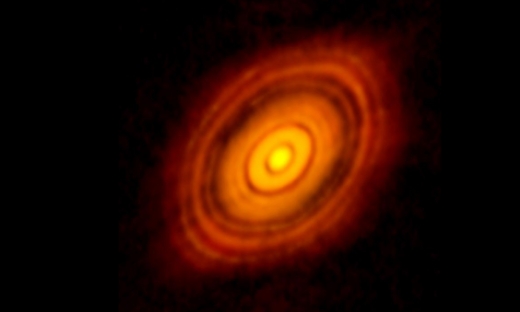
Image: Example of a protoplanetary disk. This is an ALMA image of the young star HL Tau and its disk. The image reveals multiple rings and gaps that herald the presence of emerging planets as they sweep their orbits clear of dust and gas. The image was released Nov. 6, 2014. ALMA (NRAO/ESO/NAOJ); C. Brogan, B. Saxton (NRAO/AUI/NSF).
The question, then, is what can variations in dust particle size tell us? The researchers perform simulations of movement within a ring of gas and dust in the presence of migrating planets of relatively low mass, from 12 to 60 Earth masses. The results show that the gas pressure profile of the disk varies significantly depending on whether the planet is migrating or stationary.
From the paper:
…the pressure perturbation exterior to the planet is weaker while that interior to the planet becomes more important for migrating planets. Dust can therefore be enhanced both interior or exterior to the planet and the result is governed by the relative values of the planet and dust velocities. For small sizes, the dust velocity in the outer disc is too small to keep up with the moving pressure maximum while in the inner disc it moves faster and can collect, forming a dust density enhancement interior to the planet.
For larger dust particles, the dust velocity in the disk exterior to the planet’s orbit is high enough to keep up with the pressure perturbation, producing what the authors describe as a ‘dust density enhancement’ in this region. We would thus expect smaller particles in the interior ring, larger particles in the exterior. By studying the inner and outer rings around the planetary orbit at different wavelengths, we should be able to show whether or not the planet is migrating.
We’re talking about small differences indeed — a migrating planet at 30 AU that is 30 times the mass of the Earth should, according to this modeling, be associated with an inner ring consisting of particles less than a millimeter in size, while those in the outer ring would measure slightly over a millimeter. But this is a workable observable, for as ALMA increases the wavelengths at which it observes, the inner dust ring fades while the exterior ring becomes brighter. This is because the emissivity of dust grains depends on the maximum grain size in the mixture.
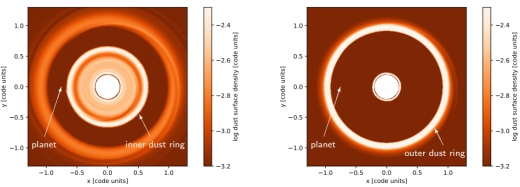
Image: This is the paper’s Figure 7. Caption: “Dust density rendered simulation image of the disc with a 30M? migrating planet at Rp = 0.75 for dust with Stokes numbers of 0.02 (left) and 0.2 (right). The small dust forms a ring interior to the planet while the large dust forms a ring exterior to it.” The ‘Stokes number’ refers to the movement of particles in flow. What is significant here is the separation of small- and large-particle dust accumulations. Credit: Meru et al.
The movement of the dust is the key. In the inner ring, we are seeing smaller particles because these move inwards more slowly than the planet itself, accumulating in the inner ring, while large dust particles are found in the exterior ring because they move at higher velocity than the smaller particles and keep pace with the planet in its movement inward. Over time, the composition of the two rings is distinctive enough to become an ALMA observable.
We’re entering an era when protoplanetary disks are becoming the subject of intense scrutiny thanks to facilities like ALMA, along with the Spectro- Polarimetric High-contrast Exoplanet REsearch (SPHERE) instrument on the Very Large Telescope (VLT) and the Gemini Planet Instrument (GPI) on the Gemini Telescope. And we’re learning that most such disks show sub-structure susceptible to such analysis. We need observational benchmarks like these because a hot Jupiter like CI Tau’s can be the result of migration, but it could also achieve its tight orbit because of gravitational interactions early in the development of the system.
Applying observational constraints to planetary migration could become a potent tool in untangling a young system’s evolution. The work is promising but still in its early stages. In principle, write the researchers, “…it may be possible to use the location of dust rings in order to detect planetary migration, although the feasibility of this measurement is yet to be established.”
The paper is Meru et al., “Is the ring inside or outside the planet?: The effect of planet migration on dust rings,” accepted at Monthly Notices of the Royal Astronomical Society (preprint).

